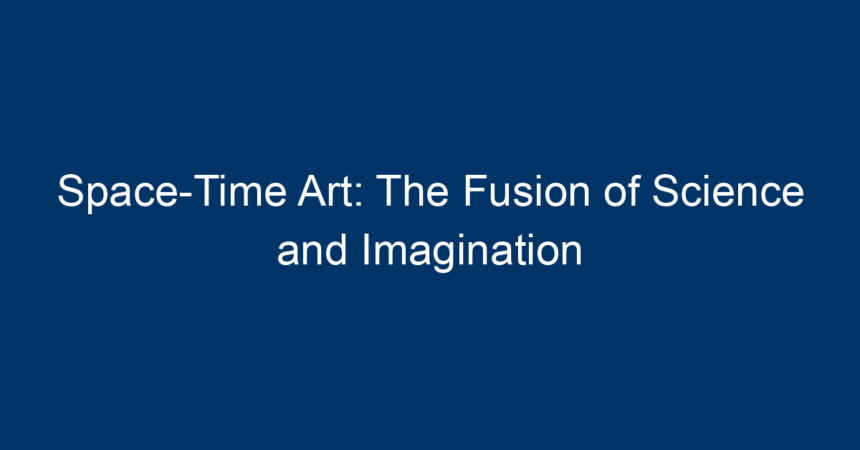In a world where boundaries between disciplines increasingly blur, space-time art emerges as a captivating intersection of science, imagination, and creativity. This innovative genre explores concepts of time and space through artistic expression, inviting viewers to reconsider their understanding of the universe. In this article, we will dive deep into the essence of space-time art, explore its historical context, and showcase some groundbreaking artists who are redefining our perceptions of reality.
What is Space-Time Art?
Space-time art is an artistic movement that incorporates theories from physics, particularly those related to the concepts of relativity and the fourth dimension. It challenges our conventional views of space and time while facilitating a dialogue between the aesthetic and the scientific. By blending these domains, space-time art encourages us to think deeply about our existence and place within the cosmos.
Theoretical Foundation
At its core, space-time art is influenced by Albert Einstein’s theory of relativity, which reveals that space and time are not separate entities but interconnected. This realization paves the way for artists to explore dimensions beyond the visible and experience time as a fluid concept rather than a linear progression. The implications of this theory extend far beyond physics, providing fertile ground for creative exploration.
Historical Context of Space-Time Art
Early Influences
The seeds of space-time art can be traced back to early 20th-century artists who embraced abstract and surreal styles. Pioneers like Jackson Pollock and Wassily Kandinsky began to challenge traditional representations of reality, opening the door to exploring deeper dimensions of existence. Their work foreshadowed the emergence of artists who would actively engage with scientific concepts.
The Avant-Garde Movement
The avant-garde movement of the 1960s further propelled the fusion of science and art. Artists began to experiment with multimedia installations and conceptual art that incorporated scientific elements. Works from this period often utilized technology to enhance the viewer’s experience, offering immersive environments that challenged preconceived notions of time and space.
Prominent Artists in Space-Time Art
Olafur Eliasson
Danish-Icelandic artist Olafur Eliasson is renowned for his installations that often integrate natural elements, light, and perception. His work invites viewers to engage with their surroundings and experience the manipulation of light and space. One of his notable works, The Weather Project, transformed the spaces of the Tate Modern into an ethereal environment, prompting contemplation of the relationship between humans and the universe.
Anish Kapoor
Anish Kapoor, known for his ambitious sculptures, often explores the themes of absence and presence. His installations evoke a sense of depth that challenges visual perception, encouraging a deeper investigation of the voids that exist in both space and time. Kapoor’s use of reflective surfaces creates an intriguing interplay between reality and illusion, making viewers question their spatial and temporal frames of reference.
TeamLab
The Japanese art collective TeamLab is a stellar example of how technology can enhance space-time art. Integrating interactive digital elements into their installations, they create immersive environments that respond to the movements and actions of the viewers. Their works, such as Borderless, epitomize the fusion of physical and virtual worlds, allowing participants to interact with art in real-time across dimensions.
The Impact of Technology on Space-Time Art
Virtual Reality and Augmented Reality
The rise of virtual reality (VR) and augmented reality (AR) has opened new avenues for space-time artists. These technologies allow for the creation of immersive experiences that transcend physical limitations. Artists can manipulate visual elements in three-dimensional spaces, giving rise to artworks that shift and evolve, thereby challenging viewers’ perceptions of time and space.
Artificial Intelligence
Artificial intelligence (AI) also plays a pivotal role in the evolution of space-time art. Algorithms can create dynamic visual patterns that reflect real-time data, pushing the boundaries of creative expression. AI-generated art can simulate experiences of time and space in ways that deeply resonate with viewers, making concepts once confined to theory more accessible.
How Space-Time Art Influences Cultural Perspectives
Encouraging Curiosity
One of the most compelling aspects of space-time art is its ability to stimulate curiosity. By intertwining scientific concepts with artistic creativity, it encourages viewers to explore complex theories and delve into inquiries about existence and reality. This curiosity fosters a deeper appreciation for the interconnectedness of art, science, and life itself.
Promoting Dialogue
Space-time art serves as a platform for dialogue between artists, scientists, and audiences. Exhibitions often feature discussions, workshops, and lectures that enrich the viewer’s experience, promoting cross-disciplinary collaboration and understanding. This dynamic exchange nurtures a culture of innovation and curiosity that propels society forward.
Accessible Space-Time Art: Exhibitions and Festivals
Art and Science Collaborations
A number of exhibitions and festivals around the world focus explicitly on the intersection of art and science. Events like the Cross-Disciplinary Arts festival encourage artists to collaborate with scientists, resulting in engaging installations that provide insight into complex scientific theories.
Public Installations
Public art installations have become increasingly popular in recent years, providing opportunities for broader audiences to engage with space-time concepts. These installations can spark conversations in urban environments, challenging everyday perceptions of reality and making space-time art accessible to everyone.
Conclusion: Embracing the Fusion of Science and Imagination
The realm of space-time art is an endless landscape where imagination and science converge. From virtual reality to immersive installations, artists continually redefine our understanding of the universe and our place within it. As we move forward, embracing this fusion of creativity and scientific inquiry can lead to groundbreaking revelations, encouraging us to think beyond the visible horizon.
Take Action
To explore space-time art further, consider visiting local exhibitions, engaging with artist talks, or even creating your own art inspired by the principles of space and time. Whether through painting, digital mediums, or interactive installations, your unique perspective can contribute to this fascinating dialogue between science and imagination. Embrace the challenge of questioning reality, and let your imagination soar across dimensions!




